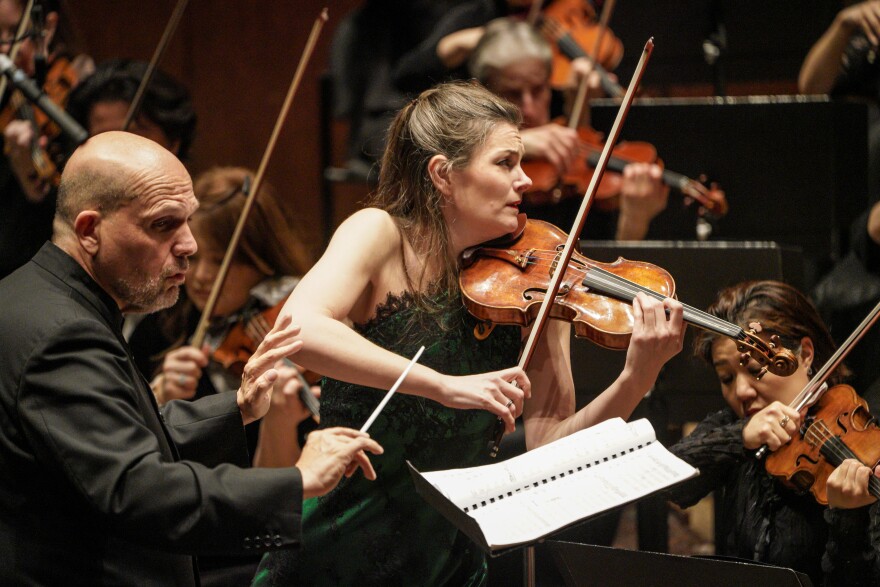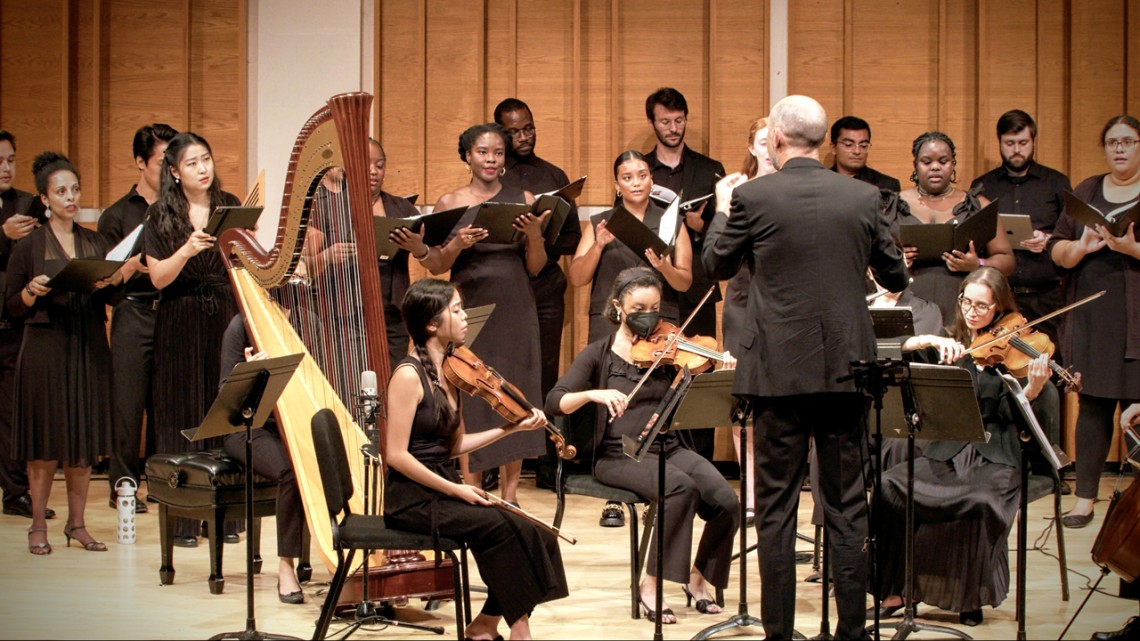The Timeless Symphony: Exploring the Rich Tapestry of Classical Music
Introduction:
Classical music, with its rich history, profound emotional depth, and enduring beauty, stands as a testament to the heights of human creativity and expression. Spanning centuries and continents, classical music encompasses a diverse array of styles, genres, and composers, each contributing to a vibrant tapestry of sound that continues to captivate audiences around the world. In this exploration, we embark on a journey through the history, evolution, and impact of classical music, delving into its significance as a cultural treasure and enduring legacy.
The Birth of Classical Music: From Baroque to Romanticism
Classical music traces its origins to the Baroque period, which flourished from the late 16th to the early 18th century. The works of composers like Johann Sebastian Bach, George Frideric Handel, and Antonio Vivaldi epitomize the intricate ornamentation, contrapuntal textures, and emotive intensity of the Baroque style. Bach's masterful compositions, including the Brandenburg Concertos and the Well-Tempered Clavier, showcase his unparalleled craftsmanship and musical innovation. The transition from the Baroque to the Classical period heralded a shift in musical aesthetics, characterized by clarity, balance, and simplicity. The classical era, spanning roughly from the mid-18th to the early 19th century, saw the emergence of composers like Wolfgang Amadeus Mozart, Ludwig van Beethoven, and Franz Joseph Haydn, whose works exemplify the elegance, grace, and emotional depth of the classical style. Mozart's sublime melodies, Beethoven's revolutionary symphonies, and Haydn's wit and ingenuity helped define the musical language of the era, laying the groundwork for the Romantic movement that would follow.
The transition from the Baroque to the Classical period heralded a shift in musical aesthetics, characterized by clarity, balance, and simplicity. The classical era, spanning roughly from the mid-18th to the early 19th century, saw the emergence of composers like Wolfgang Amadeus Mozart, Ludwig van Beethoven, and Franz Joseph Haydn, whose works exemplify the elegance, grace, and emotional depth of the classical style. Mozart's sublime melodies, Beethoven's revolutionary symphonies, and Haydn's wit and ingenuity helped define the musical language of the era, laying the groundwork for the Romantic movement that would follow.
Romanticism: Passion, Drama, and Expression
The Romantic period, which flourished in the 19th century, was marked by a profound emphasis on emotion, imagination, and individual expression. Composers like Ludwig van Beethoven, Franz Schubert, and Frédéric Chopin pushed the boundaries of musical form and structure, creating works of unprecedented emotional depth and intensity. Beethoven's symphonies, with their bold innovations and dramatic narratives, reflect the spirit of the Romantic era, while Schubert's lieder and Chopin's piano music evoke a world of passion, longing, and transcendence.
The rise of nationalism and exoticism during the Romantic era inspired composers to explore new musical idioms and themes drawn from folk traditions, mythology, and nature. Bedřich Smetana's "Má vlast" celebrates the landscapes and legends of his native Bohemia, while Nikolai Rimsky-Korsakov's "Scheherazade" conjures the exotic allure of the Arabian Nights. Meanwhile, composers like Johannes Brahms and Pyotr Ilyich Tchaikovsky synthesized classical forms with Romantic expression, creating enduring masterpieces that continue to resonate with audiences today.
The 20th Century and Beyond: Innovation, Experimentation, and Diversity
The 20th century witnessed a proliferation of styles and movements in classical music, ranging from the lush harmonies of Impressionism to the bold experimentation of atonalism and serialism. Composers like Claude Debussy, Maurice Ravel, and Igor Stravinsky broke free from traditional conventions, exploring new harmonic palettes, rhythmic complexities, and sonic textures. Debussy's "Prelude to the Afternoon of a Faun" and Ravel's "Boléro" transport listeners to ethereal realms of color and sensation, while Stravinsky's "The Rite of Spring" shocks and exhilarates with its primal energy and raw intensity.
The advent of electronic music and avant-garde techniques further expanded the horizons of classical composition, challenging audiences to rethink their notions of melody, harmony, and form. Pioneers like Karlheinz Stockhausen, John Cage, and Pierre Boulez embraced new technologies and interdisciplinary approaches, blurring the boundaries between music, art, and technology. Stockhausen's groundbreaking electronic compositions, Cage's conceptual experiments, and Boulez's rigorous serialism pushed the boundaries of sonic exploration and paved the way for future generations of composers.
Contemporary Classical Music: Diversity, Inclusivity, and Innovation
In the 21st century, classical music continues to evolve and diversify, embracing a wide range of influences, voices, and perspectives. Composers from diverse cultural backgrounds and traditions are enriching the classical canon with their unique voices and experiences, challenging long-held assumptions and expanding the scope of classical expression. Works by composers like Tan Dun, Osvaldo Golijov, and Jennifer Higdon fuse classical techniques with elements of world music, jazz, and contemporary popular styles, creating vibrant, eclectic compositions that resonate with audiences across cultural divides.
Meanwhile, initiatives to promote diversity and inclusivity in classical music are gaining momentum, with organizations like Sphinx Organization and the National Alliance for Audition Support working to address systemic barriers and promote greater representation of underrepresented communities in classical music. Concert halls, opera houses, and music festivals are programming works by women composers, composers of color, and LGBTQ+ composers, fostering a more inclusive and equitable musical landscape.
Exploring the Modern Landscape of Classical Music:
The digital age has ushered in new opportunities and challenges for classical music, transforming how it is created, distributed, and consumed. Digital platforms and streaming services offer unprecedented access to a vast repertoire of classical recordings, allowing listeners to explore diverse styles and interpretations from the comfort of their homes. Social media and online forums provide platforms for musicians, composers, and enthusiasts to connect, collaborate, and share their love of classical music with audiences around the globe.
At the same time, the digital revolution has raised questions about the future of live performance and the role of technology in shaping the classical music experience. While digital platforms have expanded the reach of classical music to new audiences, they have also raised concerns about the commodification of art and the impact on musicians' livelihoods. As orchestras and opera companies adapt to the digital landscape, they are exploring innovative ways to engage with audiences through live-streamed concerts, virtual reality experiences, and interactive multimedia productions. In addition to embracing technology, classical music organizations are also addressing the need for greater diversity and inclusion within the industry. Efforts to promote diversity in programming, hiring, and leadership roles are underway, with a growing recognition of the importance of amplifying marginalized voices and fostering a more inclusive and equitable classical music community. Initiatives like the Gateways Music Festival, which celebrates the contributions of Black musicians to classical music, and the National Orchestral Institute + Festival's Diversity Fellowship Program are working to create pathways for underrepresented musicians to pursue careers in classical music.
In addition to embracing technology, classical music organizations are also addressing the need for greater diversity and inclusion within the industry. Efforts to promote diversity in programming, hiring, and leadership roles are underway, with a growing recognition of the importance of amplifying marginalized voices and fostering a more inclusive and equitable classical music community. Initiatives like the Gateways Music Festival, which celebrates the contributions of Black musicians to classical music, and the National Orchestral Institute + Festival's Diversity Fellowship Program are working to create pathways for underrepresented musicians to pursue careers in classical music.
Looking ahead, the future of classical music holds boundless potential for innovation, collaboration, and artistic exploration. As classical musicians and composers continue to push the boundaries of tradition and experiment with new forms and genres, they are redefining what it means to be a classical musician in the 21st century. Whether through interdisciplinary collaborations, multimedia productions, or site-specific performances, classical music remains a vibrant and evolving art form that speaks to the human spirit and transcends the limits of time and space.
Conclusion:
In conclusion, classical music stands as a timeless and universal expression of the human experience, spanning centuries, cultures, and continents. From the sublime melodies of Mozart to the avant-garde experiments of Stockhausen, classical music encompasses a vast and diverse array of styles, genres, and voices that continue to inspire, challenge, and enrich our lives.
As we journey through the rich tapestry of classical music, we are reminded of its enduring power to move, uplift, and transform. Whether experienced in the hallowed halls of a concert hall, the intimacy of a chamber music performance, or the comfort of our own homes, classical music invites us to explore the depths of human emotion, imagination, and creativity.
As we look to the future, let us embrace the diversity, innovation, and inclusivity that define the modern landscape of classical music. By celebrating the rich traditions of the past while embracing the possibilities of the future, we honor the timeless legacy of classical music and ensure that its beauty and brilliance will continue to inspire generations to come.










































